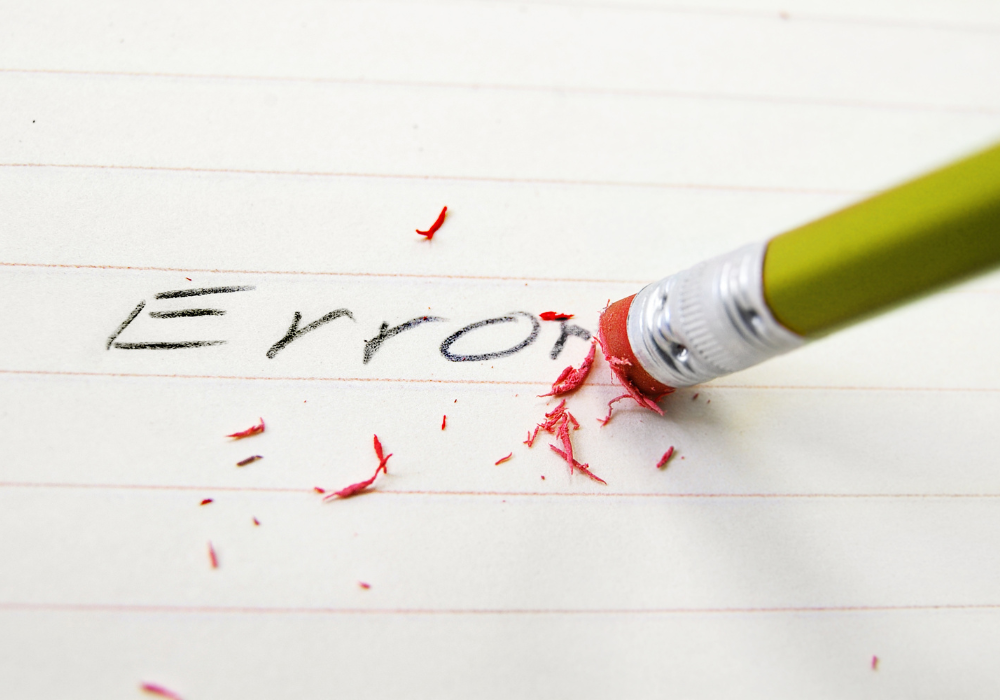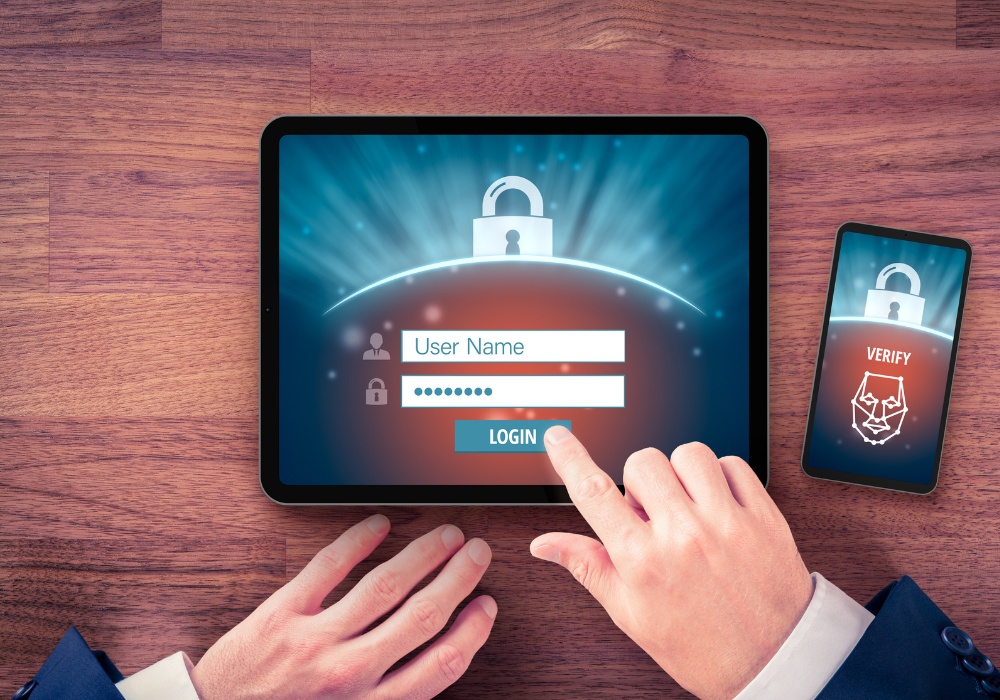
A green pencil erasing the word “error” symbolizing AGJ helping prevent human error in network security.
Human Error: The Achilles Heel of Network Security
In today's digital world, keeping up with network security changes is a challenge. Even with all the latest tech designed to protect us, one thing still trips us up: human error. We're all human, after all. We might click on a link that looks a bit iffy, use a password that's way too easy to guess, or get fooled by a sneaky email scam. Often, these slip-ups come from simply not knowing the dos and don'ts of staying safe online.
Here's the thing: keeping our networks safe isn't just about having the right tech in place. It's also about understanding how we humans can make mistakes and how to avoid them. As we use technology more and more, we might actually make ourselves easier targets for online threats. That's why it's so important to keep human error in check to strengthen our cybersecurity. Never before has the phrase "to err is human" meant so much.
UNDERSTANDING HUMAN ERROR IN CYBERSECURITY
In the world of cybersecurity, human error means those little mistakes we make that leave the door open for cyberattackers. These errors could be because we're not paying attention, we don't know any better, or we just have a moment of forgetfulness. Small mistakes can lead to big problems like sensitive data getting leaked or even money getting stolen.
One simple mistake a lot of us make is using weak passwords. It's easier to remember “123456” or “password,” right? Or maybe we use something personal like our pet's name or our birthday. Unfortunately, these easy-to-guess passwords are also easy for cybercriminals to crack, letting them waltz right into our accounts.
Another common slip-up is falling for phishing scams. These crafty scams trick us into clicking a dangerous link or sharing private info when the scammer masquerades as someone we trust.
And let's not forget about good old digital hygiene. Are we updating our software regularly? Are we careful about using public Wi-Fi? Are we backing up our data just in case? If we overlook these things, we're rolling out the welcome mat for cyberattackers.
Remember, anyone can make these mistakes. Even if you're super tech-savvy, nobody's perfect. That's why it's crucial to know about these common slip-ups. By understanding where we might go wrong, we can learn how to do things right, boosting our cybersecurity and keeping our digital world safe.
CASE STUDY: THE COSTLY CONSEQUENCE OF A SINGLE BREACH
Picture this: an unsuspecting client innocently transferring $200,000, thinking it's just another transaction. Instead, it turns into a nightmare, all thanks to a clever cybercriminal.
How did it happen? Well, it all started with the business owner reusing a password. You know how we often use the same password for different online accounts because it's easier to remember? That's what this business owner did. When a social media site they used had a data breach, the cybercriminal got ahold of their password, which just so happened to be the same one used for their business email account.
Now, having access to the email account, the attacker could sneak around and learn about the business without raising any alarms. The crafty criminal went one step further by setting up "rules" on the email account. These rules made sure any emails about money matters got automatically sent to a separate account the hacker controlled.
Armed with inside information about a business deal, the attacker then posed as the business owner. They asked their client for a wire transfer of $200,000, pretending it was part of the deal. The client didn't suspect a thing and initiated the transfer, not realizing the money was going straight to a hacker.
This story really hits home how one little slip-up, like reusing a password, can lead to a major problem. It's a hard lesson on the seriousness of security breaches and how human error can allow them to happen. Because it was their email that was hacked, they were held liable for the $200,000 that their client wired to the hacker. Sadly, it was a very costly lesson for the business owner.
THE AFTERMATH AND LESSONS LEARNED
Realizing they had been tricked, the business owner was stuck in a nightmare. Their money was gone, and getting it back was not going to be easy.
Their first thought was to call the bank, hoping they could stop the transfer or refund the money. But the problem was, the bank saw the transfer as legitimate because the owner had initiated it, even though it was under false pretenses. So, the bank's hands were tied - they couldn't reverse the transfer or offer any immediate help.
This situation is a harsh reminder that, especially in business transactions, we're the ones ultimately responsible for our security. When things go wrong, the safety nets we usually rely on, like our banks, might not be able to help us.
The business owner had to take the hard road, starting a long and complicated legal battle to sue the hacker and get their money back. It's tough to bring cybercriminals to justice due to the international nature of cybercrime and the difficulty of catching the culprits. The business had to deal with all of this while they were still suffering from the financial loss - the business owner was still out $200,000, a steep price for a simple mistake.
This distressing tale shows us just how crucial it is to secure our digital lives and understand how small mistakes can lead to big problems.
Now, let’s talk about how we can beef up our digital defenses to avoid finding ourselves in such a predicament.
THE IMPORTANCE OF TWO-FACTOR AUTHENTICATION (2FA)

A business professional using two-factor authentication to login to their account.
Two-Factor Authentication (2FA) is a handy tool in our digital security toolkit. Think of it as a double-check to confirm it's really you logging into your account. You'll need to provide two different pieces of proof of your identity, usually your password plus a unique code sent to your device.
After you enter your password, you'll need to put in a special verification code sent to your device. It adds an extra layer of safety because, even if a bad guy gets your password, they can't get into your account without that second code. And here's the kicker: that code changes with every login attempt and often expires quickly.
Sure, getting a text with the verification code is common, but it's not the safest route. Hackers can sometimes trick your mobile carrier and get your text messages. So, at AGJ, we recommend using an app like Microsoft Authenticator or Google Authenticator to get your codes. These apps tie the codes to your device, not your phone number, which is much more secure. And they generate new codes every few seconds for added safety.
Looking back at our business owner's story, 2FA could've saved the day. Even if the hacker had found the owner's password from the social media breach, without the second proof of identity from an authenticator app, they would've hit a dead end. Just like that, the cyberattack is stopped cold, and the business owner keeps their money. It just goes to show how crucial 2FA is in protecting our digital lives.
RECOMMENDATIONS FOR ENHANCING CYBERSECURITY
Beefing up your cybersecurity doesn't have to be a headache. Here are a few simple things you can do right now to make your digital world safer:
Turn on Two-Factor Authentication (2FA): It's usually pretty straightforward. Look for a security or privacy tab in your account settings and follow the prompts. If you're working with corporate accounts or a managed IT setup, you might need to have a chat with your IT department.
Try Authenticator Apps: These are a safer bet for your 2FA codes instead of getting them via text. Microsoft Authenticator or Google Authenticator are two options that generate the codes right on your device.
Make Your Passwords Tough: When it comes to passwords, longer is better. Aim for at least 12 characters and mix it up with upper and lowercase letters, numbers, and symbols. Don't use anything personal like your address or birthday and be sure to use a different password for each account.
Download AGJ's Free Security Guide: This resource is your personal playbook for managing risks, constructing a solid cybersecurity framework and preemptively tackling potential threats. With this guide at your fingertips, the power to fortify your defenses is just a click away. Don't wait; start strengthening your digital security with AGJ's guide today!
Remember, taking these steps can make a big difference in your digital security. They won't eliminate all cyberthreats, but they'll drastically cut down your chances of becoming a target. Cybersecurity isn't a one-and-done deal — it's an ongoing process of staying alert and adapting to new threats.
YOU’RE NOT ALONE
The experts at AGJ are here to help. We specialize in identifying and addressing vulnerabilities, with a keen focus on human error that often leads to breaches.
Don't wait for a breach to secure your business. Contact AGJ today for a stronger, safer digital tomorrow.


